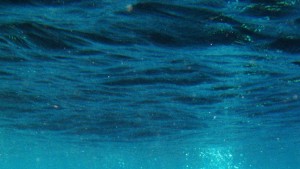You’re perusing the shelves of aquarium supplements at your local fish store when you come across a colorful bottle labeled “Dr. Hfuhruhurr’s Magic Reef Elixir.” Intrigued, you read on to discover the product’s intended purpose. The claims on the label read something like this:
“Created in a laboratory using space-age SCIENCE, Dr. Hfuhruhurr’s Magic Reef Elixir is guaranteed to replenish, restore, and rejuvenate all major, minor, and middle-of-the-road trace elements with just six (6) daily doses, thereby exciting the growthification response in all corals, anemones, fish, mollusks, and crustaceans; promoting luxurious coralline algae growth; and in the process eradicating all known aquarium pests and problem algae while rendering aquarium water safe for human consumption. Fail to add Dr. Hfuhruhurr’s Magic Reef Elixir at your peril!”
“Hmm,” you think to yourself, “I’d better get this stuff. After all, I do want growthification in my aquarium!”
But before you open your wallet and pay the (no doubt) exorbitant price for this or any other marine aquarium supplement, be sure to ask yourself the following questions:
1) Does my tank need any supplementation?
While reef systems may require certain forms of supplementation, fish-only and fish-only-with-live-rock (FOWLR) systems will do just fine with no supplementation whatsoever other than what’s provided through regular partial water changes.
Remember, all of the major and minor elements needed to sustain marine organisms are contained within a quality synthetic sea salt mix (and natural sea water, of course), so every time you do a water change (which you should be doing routinely), you’re replenishing these constituents.
Reef systems may require supplementation of certain elements—most notably to replace calcium and alkalinity, but potentially other major elements and trace elements as well—because in closed systems, the corals and other invertebrates may use up these components faster than they can be replenished through water changes. This is especially true of mature systems stocked heavily with stony corals and/or clams.
2) Are the product’s claims too good to be true?
There are a lot of proprietary formulas out there that make rather wild, unsupportable claims about the benefits they’ll impart. Don’t succumb to the allure of marketing. Some of these products are no better than placebos—causing no harm, but doing no real good, either. The old adage applies here: “If it sounds too good to be true, it probably is.”
3) Can I test for it?
Ideally, you shouldn’t add an element to your marine aquarium unless you have a corresponding test kit to measure and monitor the level of the element in your water. Also, keep in mind that you can only test for a supplement if you actually know what’s in it. No “secret formulas”!
4) Could an excess of the element be harmful?
If the product label does not list the supplement’s ingredients or only vaguely indicates what they are (thus, you can’t test for them), you have no way of knowing whether some component of the formula is already maintained at a sufficient level in your tank, in which case, adding more could potentially be harmful. Remember, some elements are safe, indeed vital, at trace levels but potentially toxic at higher levels. For example, we know a trace amount of copper is present in sea water, but you certainly wouldn’t want to add more of it to your aquarium, as higher levels of this element are deadly to invertebrates and harmful to certain fish.
In some cases, adding more of one element can have the effect of driving down the level of another. For instance, increasing the amount of calcium you’re adding to your reef tank in an effort to push up the level could have the effect of lowering your system’s alkalinity level. The same applies to increasing your supplementation of alkalinity buffers—doing so could drive down your calcium level. The reason being, water can hold only so many dissolved solids, so there’s something of a seesaw effect between these two elements. They have to be supplemented in proportion.
5) How do I dose it?
Last but not least, before adding any supplement to your marine aquarium, make sure you know precisely how and how frequently to dose it. Start with the minimum dose recommended by the manufacturer and then monitor how your system reacts, moving up in dose gradually and incrementally if necessary. Never assume “if a little is good, more is better.”



